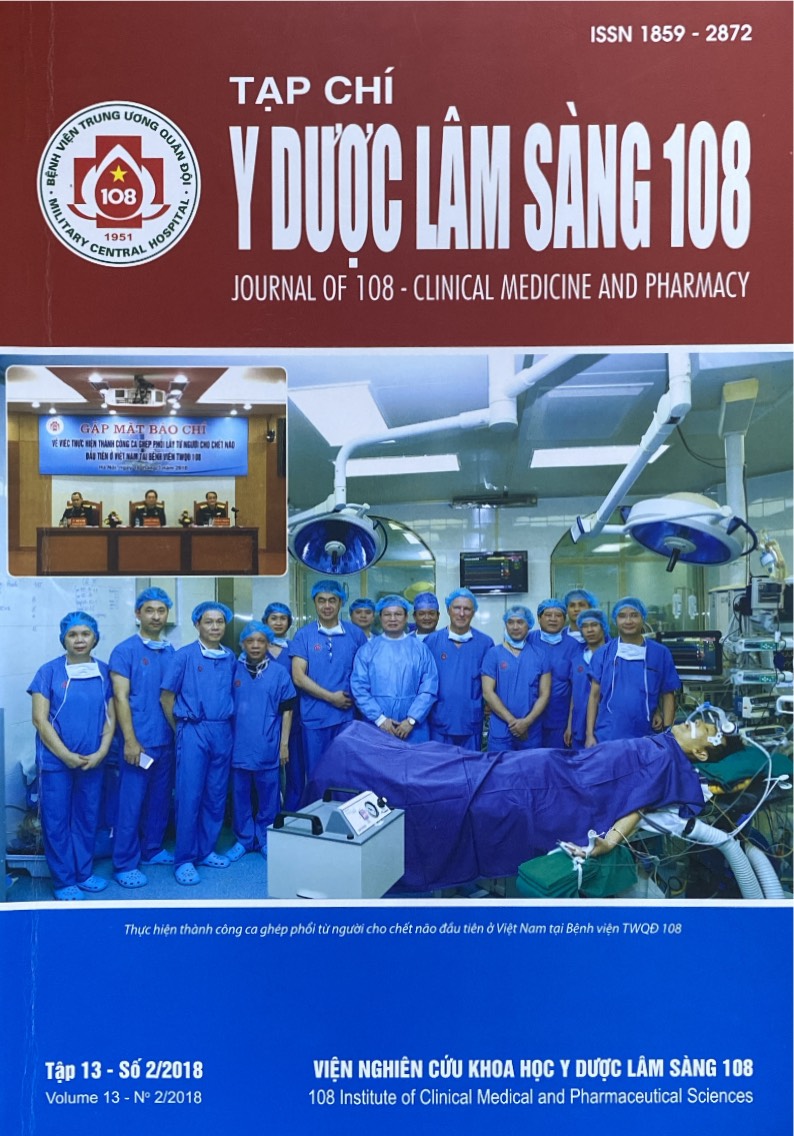Tác động biến đổi nhãn áp của Ganfort trên mắt glôcôm góc mở
Main Article Content
Keywords
Tóm tắt
Mục tiêu: Đánh giá hiệu quả biến đổi nhãn áp của thuốc phối hợp cố định Ganfort trong điều trị glôcôm góc mở. Đối tượng và phương pháp: Nghiên cứu được thực hiện dưới dạng mô tả lâm sàng tiến cứu sử dụng thuốc Ganfort (Timolol maleate 0,5% - bimatobrost 0,03%) tra 1 lần/ngày vào 7 giờ sáng. Nghiên cứu thực hiện trên những mắt glôcôm góc mở (đã hoặc chưa phẫu thuật) đang được điều trị bằng thuốc nhóm β blocker hoặc prostaglandine nhưng nhãn áp trên 21mmHg (nhãn áp kế Goldmann); những mắt điều trị bằng thuốc phối hợp khác nhưng nhãn áp chưa đạt mức nhãn áp đích. Kết quả: Tỷ lệ đáp ứng điều trị thành công của thuốc là 84,44%. Nhãn áp trung bình sau 2 tuần điều trị 16,21 ± 3,154mmHg, sau 3 tháng điều trị 14,57 ± 2,535mmHg. Mức độ hạ nhãn áp trung bình 13,58mmHg tương đương 47,44%, ổn định qua các tháng điều trị. Dao động nhãn áp trung bình ban ngày 1,348 - 1,437mmHg nằm trong giới hạn sinh lý bình thường. Kết luận: Ganfort có hiệu quả trong hạ nhãn áp và ổn định nhãn áp trong ngày.
Article Details
Các tài liệu tham khảo
2. Curran MP and Orman JS (2009) Bimatoprost/timolol A review of its use in Glaucoma and ocular hypertension. Drugs Aging 26(2): 169-184.
3. Hommer A et al (2007) A double-masked, randomized, parallel comparision of a fixed combination of bimatoprost 0.03%/ timolol 0.5% with non-fixed combination use in patients with glaucoma or ocular hypertension. European Journal of Ophthalmology 17: 53-62.
4. Feuerhake C, Buchholz P, Friedemann K (2009) Efficacy, tolerability and safety of the fixed combination of bimatoprost 0.03% and timolol 0.5% in a broad patient population: Multicenter, open-label observational study. Current Medical Research Opinion 25.
 ISSN: 1859 - 2872
ISSN: 1859 - 2872
